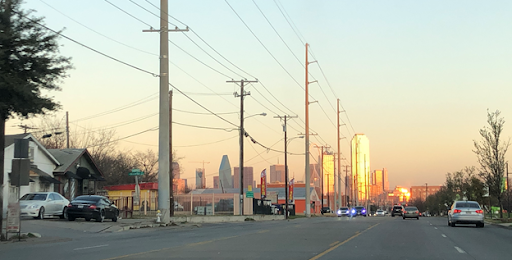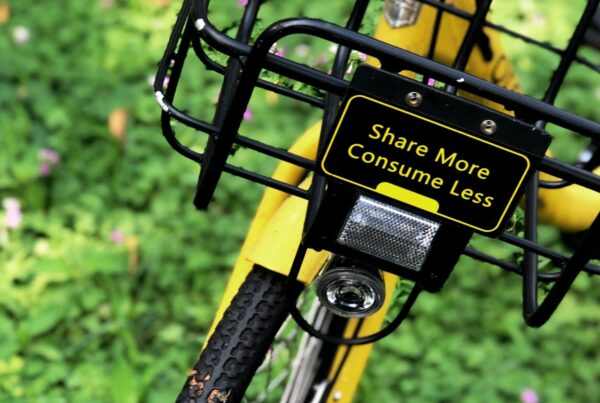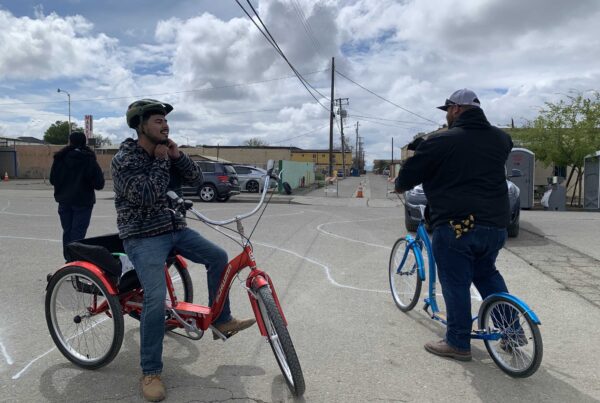The economic portrait of West Dallas is similar to that of many large American cities. An industrial boom starting in the 1930s created jobs in close proximity to lower-incoming housing, but the 1980s saw factory closures and deindustrialization. The community, which was primarily black and Latino, remained.
Today, people in these neighborhoods face barriers getting to transportation—frequency, language and technology barriers, unsafe infrastructure, and more. These challenges are all too common, reflected in many parts of the Dallas Fort-Worth region and around the country. And they’ve only exacerbated as agencies have had to cut service in light of COVID-19.
A local philanthropic organization approached the Shared-Use Mobility Center (SUMC) to identify mobility needs and solutions, emphasizing mobility on demand. SUMC’s goal was to find equitable, sustainable solutions for the entire community, especially its most vulnerable, with an emphasis on the role private philanthropy can play to advance these recommendations.
The West Dallas Mobility Needs Assessment, written and researched by Erin Evenhouse, Peter Lauer, and Alvaro Villagran at the Shared-Use Mobility Center (SUMC), is the result of this request. Download it here.
SUMC’s Strategy:
Engagement
The engagement strategy was two-fold. The SUMC team held conversations with Dallas Area Rapid Transit (DART) and the City of Dallas to gauge the role of future and ongoing infrastructure improvements, while also organizing two focus-group discussions, held in Spanish, with individuals who live or work in the west side of West Dallas to gain in-depth knowledge about this historically low-income area.
“Participating in these focus groups was an eye-opening experience for our team. We were able to hear in participants’ own words both the mobility challenges and the deep pride that people who live and work in West Dallas take in their neighborhoods.”
– Erin Evenhouse, author and Shared-Use Mobility Center Program Manager
Research
The SUMC team began by analyzing the neighborhood’s demographics, community history, and mobility options. They learned the nature of the concerns about gentrification and community stability. Next, they reviewed resources from the Mobility on Demand Learning Center and assessed infrastructure costs for potential enhancements. Lastly, SUMC researched potential Mobility on Demand options.
Analysis
Mobility Climate in West Dallas
In West Dallas, mobility needs are high and residents struggle to access opportunity. The current neighborhood is low density and disinvested. The poverty level is high and many residents are transit-dependent. However, along the eastern edge of the neighborhood near downtown, it is rapidly gentrifying.
Safety and reliability regarding transit are also factors. Focus group members commonly expressed an interest in more frequent transit to decrease wait times, as well as more street lighting, sidewalks, benches, and protection from the elements.
In their words:
“Ya no viajo más en autobús. Ahora manejo. Cuando viajaba en autobús en invierno, hacia tanto frio que se veía gente temblando en las paradas. Y a veces los conductores de autobús no respetaban las paradas.”
[“I don’t ride transit anymore, I drive. When I did, it was so cold in the winter, people would be shaking, and sometimes the bus drives right by.”]
“En algunas calles es imposible saber si hay una parada de autobús o no porque no hay luz ni señales.”
[“On some streets, it is impossible to know whether there is a bus stop or not because there are no lights or signs.”]
Lessons Learned
In evaluating mobility needs in West Dallas, SUMC observed many barriers to access, including affordability, technology, and more, which prevent seamless mobility for all. The following improvements would greatly advance access to jobs, core services, and other destinations, for the residents of West Dallas and beyond.
Recommendations
Improve pedestrian and transit-supportive infrastructure. West Dallas neighborhoods, like most of Dallas, lack both sidewalks and appropriate lighting. While the transit network is unlikely to see an increase in frequency, investments in infrastructure that make it easier to wait would yield great dividends. To this end, the city’s public works department has partnered with philanthropic entities to install infrastructure in lower-income neighborhoods.
Partner with local and regional institutions. While many partners are doing good work, especially in partnership with academic networks, there is room for public, private, philanthropic, and NGO interests to work together.
Plan on-demand, electric mobility services. SUMC highlighted microtransit options that could be funded to build upon local transit and fill mobility gaps in the area, improving job access and residents’ quality of life.
Response
As a result of SUMC’s assessment, the local philanthropist funded a micromobility shuttle for West Dallas that provides rides in these neighborhoods. This local and customized solution is an important step toward developing a more equitable and useful mobility system. Moving forward, these solutions need regional stakeholder engagement to continue to build on the current success and expand access to opportunity for everyone in our cities.




